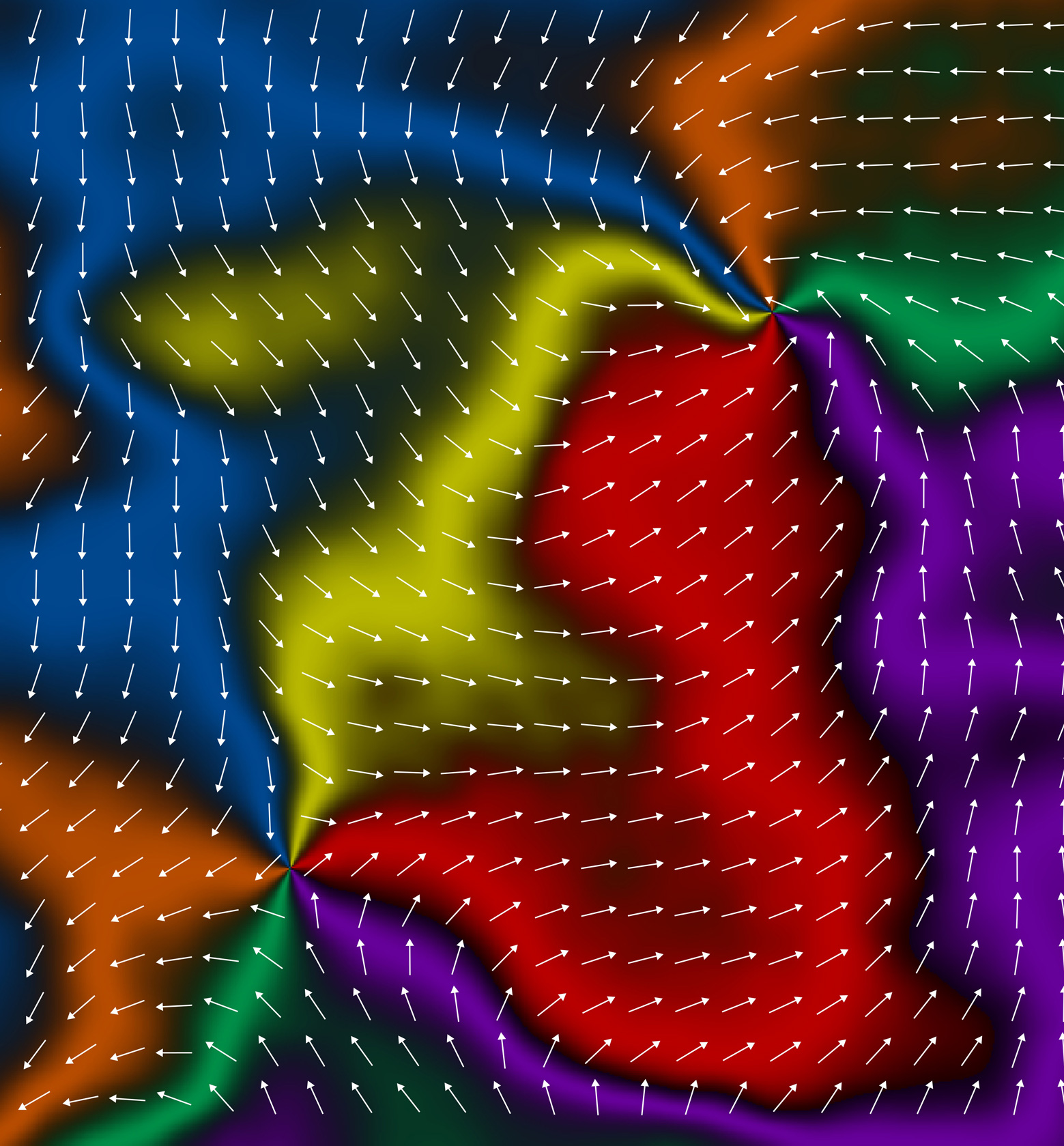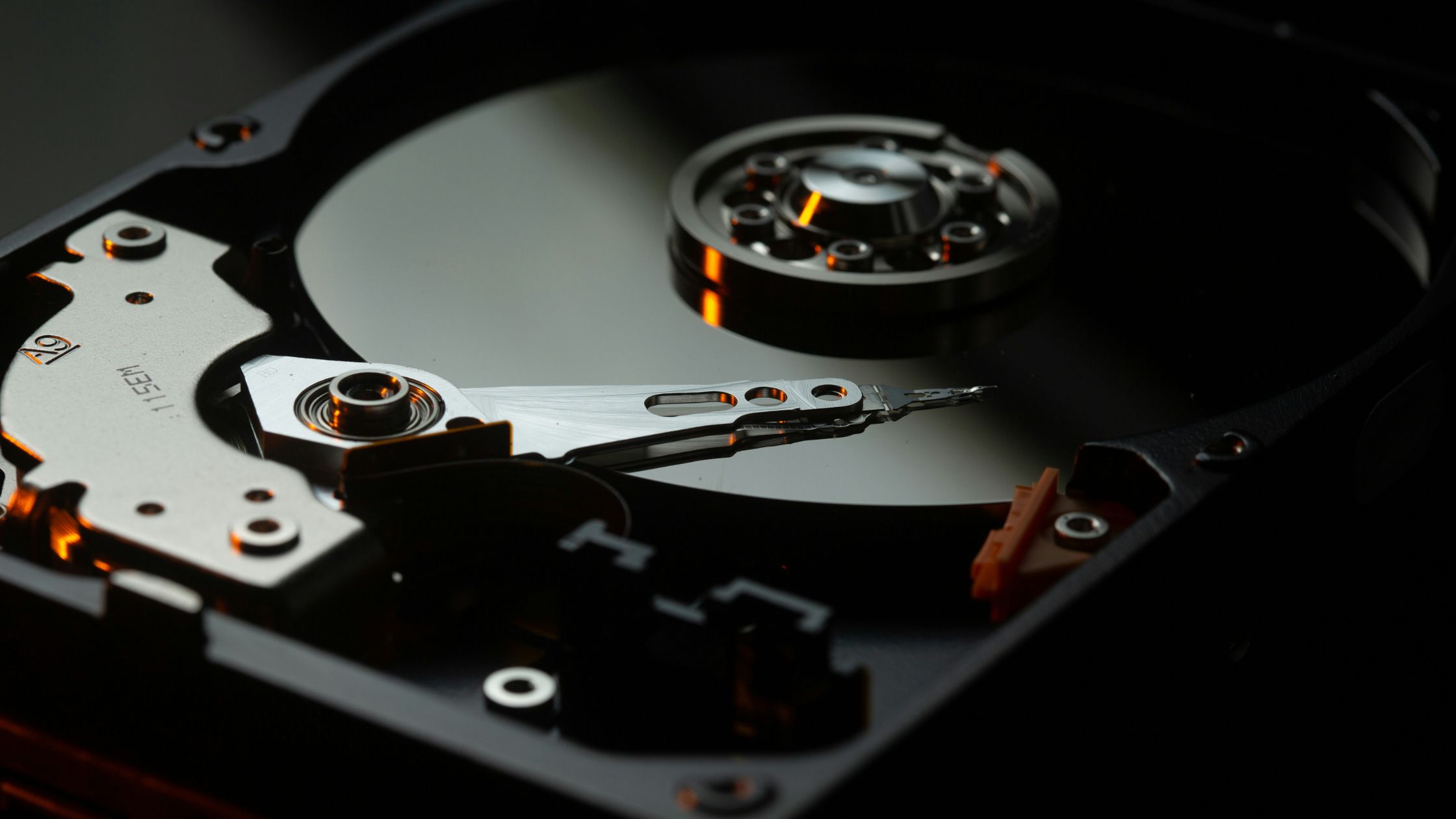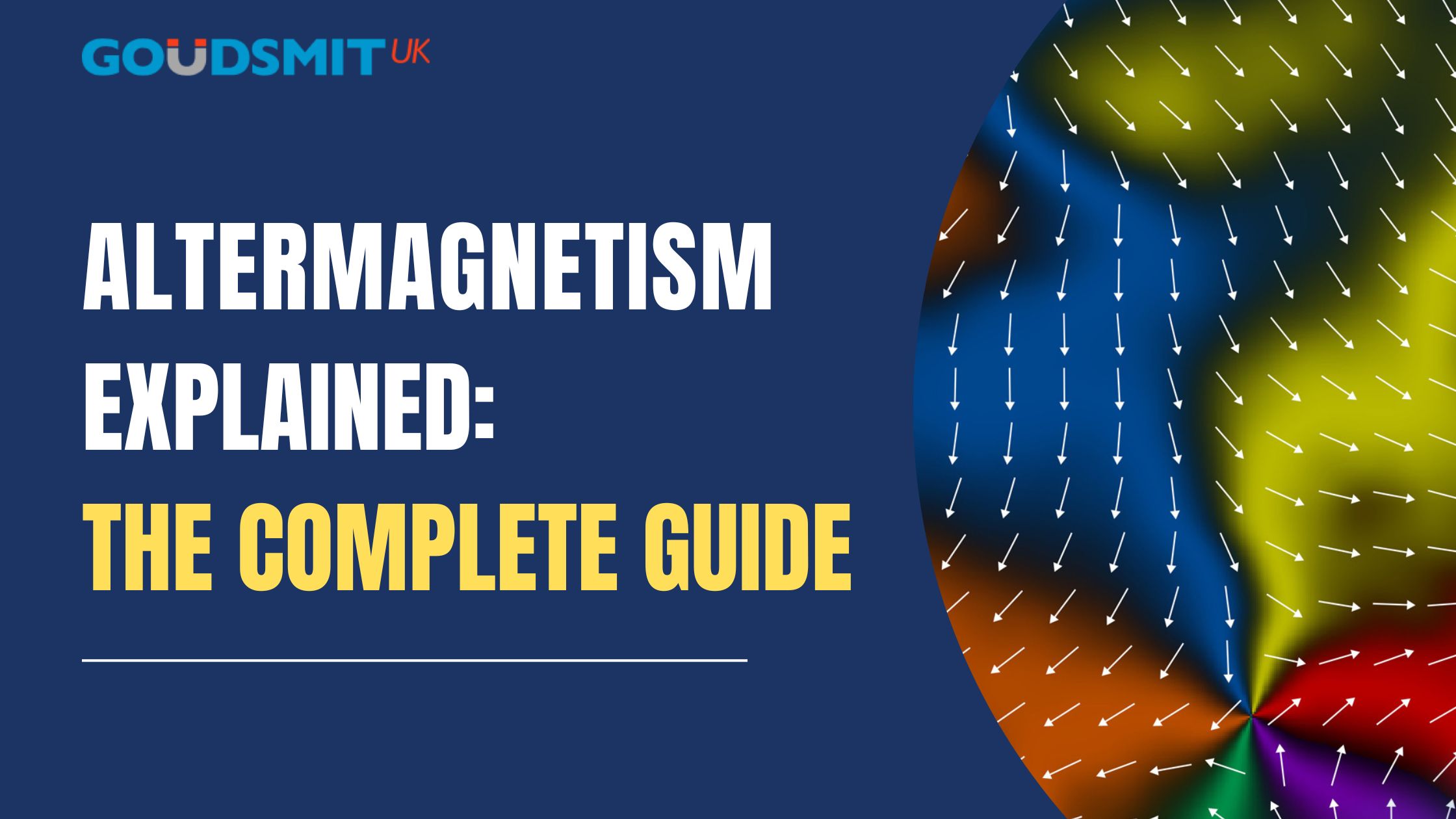Magnetism has long been categorised into two primary types: ferromagnetism and antiferromagnetism. However, recent research has unveiled a third form – altermagnetism.
This novel class of magnetism, first theorised in 2019 and confirmed in 2024, combines key elements of ferromagnetism and antiferromagnetism.
Consequentially, altermagnetism is generating excitement for its potential to revolutionise magnetic memory and open new possibilities for efficient data storage and advanced computing technologies.
This guide explores what altermagnetism is, its properties, potential applications, and why it could be revolutionary for industries relying on advanced magnetic technologies.

What is Altermagnetism?
Altermagnetism is a newly discovered type of magnetism where magnetic moments (tiny magnetic fields created by electrons) align in opposite directions but follow a distinct rotated pattern.
This unique arrangement creates properties that combine key elements of both ferromagnets and antiferromagnets.
Like antiferromagnets, altermagnets have magnetic moments that align in opposite directions, cancelling out any overall magnetisation. This can be thought of almost like a chess board, where each moment is aligned antiparallel to its neighbour.
However, like ferromagnets, altermagnets still allow spin-polarised currents. In ferromagnets, spin-polarised currents can only occur because all electron spins or moments align in one direction (producing a magnetic field).
The key distinction in altermagnets is that the larger, crystal-like structures holding these magnetic moments are rotated relative to each other, creating distinct electronic behaviours. It is the rotation of these larger structures that allows for spin-polarised currents to still occur in altermagnets.
This makes altermagnets potentially valuable for a variety of applications, particularly in electronics and data storage. They eliminate the possibility of stray magnetic fields while still allowing for a spin-polarised current – a highly useful combination for modern electronics.
Comparison with Other Forms of Magnetism
Until recently, physics recognised only two types of magnetism: ferromagnetism and antiferromagnetism.
Ferromagnetism is responsible for the behaviour of materials like iron and nickel, where all magnetic moments align in the same direction, producing strong magnetisation – such as the force that makes fridge magnets stick.
Antiferromagnetism occurs when magnetic moments align in a regular pattern but point in opposite directions, cancelling each other out and resulting in no external magnetic field.
The table below highlights key differences between the three types of magnetism:
| Feature | Ferromagnetism | Antiferromagnetism | Altermagnetism |
|---|---|---|---|
| Spin Alignment | All spins aligned in the same direction | Alternating up-down spins (cancel each other out) | Alternating spins with unique symmetry in larger structure. |
| Net Magnetisation | High (Strong permanent magnet) | Zero (Spins cancel out) | Zero (But behaves differently from antiferromagnets) |
| External Magnetic Field | Strong (Produces external field) | None | None |
| Electronic Band Structure | Spin-split (Different energy levels for spin-up & spin-down) | No spin-split | Spin-split (Similar to ferromagnets) |
| Magnetic Sensitivity | Easily influenced by external fields | Requires high external energy to manipulate | Highly stable and robust against interference |
| Example Materials | Iron (Fe), Nickel (Ni), Cobalt (Co) | Manganese oxide (MnO), Hematite (Fe₂O₃) | Manganese telluride (MnTe) |
| Key Applications | Permanent magnets, motors, data storage | Magnetic memory, shielding, spintronics | Spintronics, quantum computing, data-storage. |
How Altermagnetism was Discovered
In 2019, researchers at Johannes Gutenberg University Mainz (JGU) first came across an unexpected spin phenomenon that neither fit ferromagnetism nor antiferromagnetism.
Mathematical analysis of spin symmetries led them to predict the existence of altermagnetism, concluding that the magnetic order must be distinct from the two well-known classes.
In 2024 scientists at JGU demonstrated a definitive signature of altermagnetism using specialised electron microscopes. This result garnered significant attention, including recognition as one of the year’s top physics breakthroughs.
Researchers from the University of Nottingham’s School of Physics and Astronomy also published an imaging study of altermagnetism in 2024, using advanced x-ray microscopy to visualise how spins arrange in nanoscale regions of an altermagnetic material – thereby providing the first image of altermagnetic order in action.
Applications of Altermagnetism
Altermagnetic materials hold significant potential across a wide range of industrial and technological applications. Although research into altermagnetism is still in its early stages, scientists and engineers are exploring how its unique properties can revolutionise electronics, computing, and data storage. Below are some of the key areas where altermagnetism could make an impact.
1. Spintronics
Spintronics is an advanced technology that leverages both the charge and spin of electrons to store and process information.
Traditional electronics rely solely on electrical charge, but spintronics introduces electron spin (“up” or “down”) as an additional way to encode data—similar to binary code (0s and 1s).
The emergence of altermagnets, which enable spin-polarised currents without requiring an external magnetic field, has opened new possibilities for high-speed, energy-efficient spintronic devices.
By utilising magnetic spin rather than current for calculations and memory storage, future processors could integrate computing and memory functions into a single device, drastically improving performance.
This breakthrough could lead to faster, more energy-efficient electronics that are ideal for quantum technologies, artificial intelligence (AI), and next-generation memory storage.
2. Data Storage & Memory
One of the most promising uses of altermagnets is increasing data storage capacity in hard drives and microelectronic components.
Current commercial storage devices use ferromagnetic materials, which are limited in how tightly packed that they can be before their external magnetic fields interfere with one another, restricting how small components can be made.
Altermagnets solve this issue as they produce no stray magnetic fields, allowing them to be packed more densely without interference, enabling a huge increase in microelectronics speed and efficiency.
Another breakthrough could be in dynamic random-access memory (DRAM), where using the magnetic moment of electrons instead of their charge could greatly enhance data storage capacity and speed.

3. Energy-Efficient and Eco-Friendly Computing
As data centres and computing technologies expand, so does their energy consumption. Traditional magnetic storage devices contribute significantly to global energy use and electronic waste.
Additionally, magnetic materials power most long-term computer memory, but they also contribute to a high carbon footprint due to the energy-intensive production of rare and toxic heavy elements.
Altermagnets offer a greener solution, reducing the energy costs of memory storage and minimising reliance on rare and toxic materials.
Scientists have already identified at least 200 materials with altermagnetic properties, meaning there are potentially multiple sustainable options to replace existing magnetic technologies.
By replacing certain ferromagnetic components with altermagnetic alternatives, industries can reduce environmental impact while boosting device efficiency and longevity.
Goudsmit UK
As an established permanent magnet manufacturer, we offer a wealth of experience in not only the automotive industry, but also in the medical, aerospace, renewable energy and oil and gas sectors.
Our extensive range of solutions can help you improve output quality, productivity, and the lifespan of your machines. Should you have a special requirement, our team of design engineers will be happy to create a custom solution.
All magnetic products manufactured by Goudsmit UK also meet or exceed ISO 9001 quality standards.
Contact our team on (+44) 02890 271 001 or email us at info@goudsmit.co.uk.
Download our products and services brochure.







